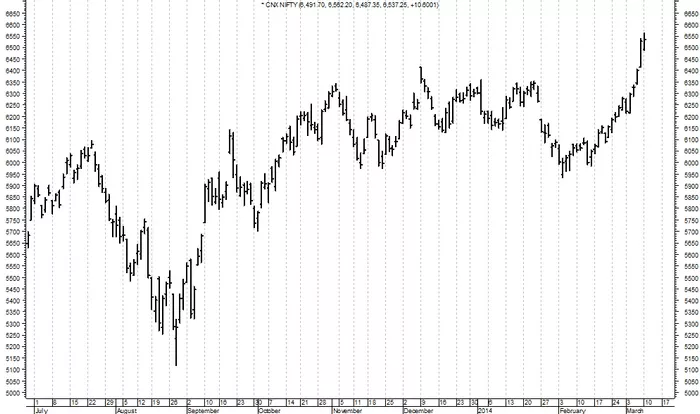When it comes to stock trading, understanding the different types of orders and the terminology associated with them is crucial. One key term that traders encounter frequently is “limit.” While it may seem simple at first, a limit in stocks has multiple facets that affect how orders are executed, as well as the risks and rewards for traders.
This article will provide a comprehensive explanation of what a limit means in the context of stocks. It will cover the basics, how limit orders work, the types of limit orders, and how traders can use them effectively to manage their trades. Whether you are a beginner or an experienced investor, understanding the concept of a limit in stocks is essential to optimizing your trading strategy.
The Basics of Stock Trading
Before delving into the details of limit orders, it’s essential to understand some basic concepts in stock trading. Stock trading involves buying and selling shares of publicly listed companies on the stock market. These shares represent partial ownership of a company, and the price of these shares fluctuates based on supply and demand in the market.
In order to execute trades, investors place different types of orders, such as market orders, limit orders, stop orders, and others. Each type of order has its unique characteristics and purposes.
What Is a Limit Order?
A limit order is an order placed by a trader to buy or sell a stock at a specified price or better. It allows the trader to control the price at which they buy or sell a stock. The key feature of a limit order is that it is not executed immediately at the current market price. Instead, it is executed only when the stock reaches the price set by the trader or a better price.
For example, if a trader wants to buy a stock at $50 but the current market price is $55, they can place a limit order to buy at $50. The order will not be executed until the stock price drops to $50 or lower. Similarly, a trader may place a sell limit order if they want to sell a stock at a price higher than the current market price.
Limit orders give traders greater control over their trades, particularly in terms of the price at which the trade is executed. They are especially useful when the market is volatile or when the trader does not want to execute a trade at an unfavorable price.
Types of Limit Orders
There are several variations of limit orders that traders can use depending on their goals and trading strategies. These include:
1. Buy Limit Order
A buy limit order is an order to buy a stock at or below a specified price. Traders use this order when they believe the stock price will decrease and want to buy at a lower price. For example, if a stock is currently trading at $100, but a trader believes that the price will fall to $95, they can place a buy limit order at $95. The order will only be executed if the stock price reaches or falls below $95.
2. Sell Limit Order
A sell limit order is an order to sell a stock at or above a specified price. Traders use this order when they believe that the stock price will increase and want to sell at a higher price. For example, if a stock is currently trading at $50, but a trader believes that the price will rise to $60, they can place a sell limit order at $60. The order will only be executed if the stock price rises to $60 or higher.
3. Day Limit Order
A day limit order is a limit order that remains active throughout the trading day. If the order is not executed by the end of the trading day, it is automatically canceled. Day limit orders are ideal for traders who want to set a limit on their trades but do not want their orders to carry over into the next trading session.
4. Good-Til-Canceled (GTC) Limit Order
A Good-Til-Canceled (GTC) limit order is an order that remains active until it is either executed or canceled by the trader. Unlike day limit orders, GTC orders do not expire at the end of the trading day. They can be left open for an extended period, which is useful for traders who want to enter or exit a position at a specific price but are willing to wait for the market to reach that price.
5. OCO (One Cancels Other) Limit Order
An OCO order is a combination of two orders, where the execution of one order automatically cancels the other. Traders use OCO orders to manage both potential profits and stop-loss levels at the same time. For example, a trader may place a buy limit order at a price higher than the current market price and a sell limit order at a price lower than the current market price. If one of the orders is executed, the other is automatically canceled.
How Do Limit Orders Work?
Limit orders function by providing specific price instructions to the broker or trading platform. When a trader places a limit order, the order is queued in the order book, waiting for the stock price to reach the specified limit price or better. Unlike a market order, which is executed immediately at the best available price, a limit order will only be executed if there is a matching buy or sell order at the limit price or a better price.
For example:
Buy Limit Order: If a trader places a buy limit order for a stock at $100 and the current market price is $105, the order will not be executed immediately. It will remain open until the stock price drops to $100 or below. Once the stock hits the specified price, the limit order will be triggered and executed.
Sell Limit Order: If a trader places a sell limit order for a stock at $150 and the current market price is $145, the order will not be executed until the stock price rises to $150 or higher.
Limit orders provide traders with more control over the price at which their trades are executed. However, there is no guarantee that the order will be filled, as it depends on market conditions. If the stock price never reaches the specified limit, the order will remain unfilled.
Advantages of Using Limit Orders
Limit orders offer several benefits to traders, particularly in terms of control, price precision, and risk management. Some of the key advantages include:
1. Price Control
Limit orders allow traders to have more control over the price at which their orders are executed. By setting a specific price limit, traders ensure that they do not pay more than they are willing to pay (in the case of a buy order) or sell for less than they are willing to accept (in the case of a sell order). This is particularly useful in volatile markets where prices can fluctuate rapidly.
2. Risk Management
Limit orders are a valuable tool for managing risk. By setting a limit on the price at which an order is executed, traders can reduce the risk of entering or exiting a trade at an unfavorable price. This is particularly important when the market is moving quickly or when trading in less liquid stocks, where prices may be subject to larger swings.
3. Avoiding Slippage
Slippage occurs when the execution price of an order is different from the expected price due to changes in market conditions. By using a limit order, traders can avoid slippage because the order will only be executed at the specified price or better. Market orders, on the other hand, are more susceptible to slippage, especially during periods of high volatility.
4. Automation
Limit orders allow traders to automate their trades, as they do not need to constantly monitor the market. Once a limit order is placed, it will remain in effect until it is either filled or canceled, reducing the need for manual intervention. This is particularly useful for traders who may not have the time to monitor the markets continuously.
Disadvantages of Using Limit Orders
While limit orders offer many benefits, they also have some drawbacks that traders need to be aware of. These include:
1. Not Guaranteed to Be Filled
One of the main disadvantages of limit orders is that they are not guaranteed to be executed. If the market price never reaches the specified limit, the order will remain unfilled. This is a risk that traders must consider when using limit orders, especially in fast-moving markets where prices may change rapidly.
2. Missed Opportunities
In some cases, a trader may set a limit order with a price that is too far from the current market price. As a result, the stock may never reach the limit price, and the trader may miss the opportunity to enter or exit a trade. This is especially relevant in highly volatile markets, where price movements can be rapid and unpredictable.
3. Order Queues
Limit orders are placed in the order book and are filled based on price and time priority. If there are many orders at the same price level, a trader’s limit order may be delayed or not filled until the market moves in their favor. This can be frustrating, particularly when trading in stocks with low liquidity.
How to Use Limit Orders Effectively
Limit orders can be a powerful tool when used correctly. Here are some tips for using limit orders effectively:
1. Set Realistic Prices
When placing a limit order, it’s essential to set a price that is realistic based on current market conditions. Setting an overly optimistic limit price may result in the order never being filled. It’s important to balance your price expectations with market trends.
2. Use Limit Orders for Risk Management
Limit orders can help manage risk by ensuring that you don’t enter or exit a position at an unfavorable price. For example, setting a buy limit order below the current market price or a sell limit order above it can help you control your entry and exit points.
3. Monitor Market Conditions
Although limit orders automate the execution of trades, it’s still important to monitor the market and adjust your limit orders if necessary. Market conditions can change rapidly, and it may be necessary to adjust your limit order to align with new price levels.
Conclusion
Limit orders are a powerful tool in stock trading, providing traders with greater control over the price at which their trades are executed. By understanding the different types of limit orders and how they work, traders can use them effectively to manage risk, avoid slippage, and achieve their trading goals. However, traders should also be aware of the limitations of limit orders, such as the possibility of missed opportunities and unfilled orders.
Whether you are a novice or an experienced trader, mastering the use of limit orders can enhance your ability to execute trades efficiently and manage risk effectively.
Related topics:

































